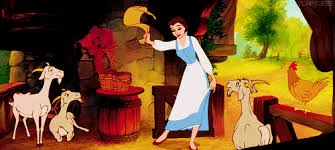If you ever wonder if you’re using point of view (POV) correctly, put yourself in the character’s head and ask yourself if you can see what you implied the character can see. For example, you can’t see colour creep into your cheeks, but you can feel the heat of a blush. You can’t see yourself paling, but you can feel blood drain from your face. In short, always go into your character’s head. One can use mirrors, windows, or any reflective surface to see the character’s image and explain it.
Example A:
Nathan’s wife coughed and he hastily wiped a spot of blood from her lips, trying to hide the evidence. But she saw it and, for the first time, fear flickered in her eyes. Unable to bear seeing her pain and now fear, he dragged himself from her deathbed and leaned on her dresser, then lifted his head and stared at his image in an ornate mirror. Dark shadows underscored his sunken eyes, and deep lines drew his wide mouth down. He tried to smooth his tousled black hair. He was strong, but was he strong enough to bear losing her? In reality, what use was his immense size and strength in the face of death?
There you have it all—how he feels, where he is, and how he looks. However, don’t overuse this ploy. Have another character tell you what the reader wants to know, like in this second example.
Example B:
She coughed and tried to wipe her mouth. Nathan leaned over and gently wiped her lips. She caught sight of a crimson stain of blood on the handkerchief that he tried so hard to hide. For the first time, fear rippled through her. So this was the end. She touched his haggard cheeks, hating that dark shadows underscored his sunken eyes, and deep lines drew his wide mouth down—a mouth always so ready to smile. She tried to smooth his tousled black hair. “Be brave, my darling husband.” But in reality, what use was his immense size and strength in the face of death?
With the second way, one has fewer words and you can add a bit more about his character, like the fact that he smiles readily. He would not necessarily see himself like that.
Then there is the other POV problem—head hopping. I know the feeling of wanting to see and feel everything from each characters head, but it makes a reader’s head spin until they are so confused they have no idea who is feeling and saying what.
Stay in one character’s head for at least a page, preferably a chapter or at least until there is a radical day or scene change.
If you really need to go into another character’s head mid-scene, then you need “permission.” Have the character touch some part of their body, preferably the head, like brushing back their hair or rubbing the back of their neck. Then the reader is drawn to that action and their attention is on that character. But this is not ideal. One can always convey how the other character feels with body language.
If you are truly confounded, you can always contact a helpful editor at IFW at IFWeditors@gmail.com for assistance.






